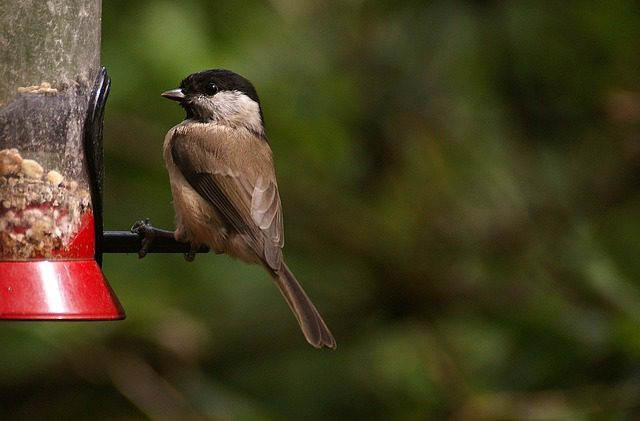 I am so excited! In the next few weeks, there will be a huge influx of migrating birds flying through our area. Some will stay here for the summer and some will travel on to areas farther north. No longer will we see ONLY sparrows and starlings. (Both by the way are introduced species. I’m biased toward native species.) The skies will be full of brighter colors and different shapes and marvelous songs.
I am so excited! In the next few weeks, there will be a huge influx of migrating birds flying through our area. Some will stay here for the summer and some will travel on to areas farther north. No longer will we see ONLY sparrows and starlings. (Both by the way are introduced species. I’m biased toward native species.) The skies will be full of brighter colors and different shapes and marvelous songs.
I look forward to going to my often revisited areas and sit for a while to check what is new and chirping. There are lots of methods of learning about new species. Just sitting still and watching and listening for activity will tell you the most about birds around you.
After you hold still and get quiet, the birds will return to their regular activities. You know, flirting with the girls, building their nests and foraging. Then you can see very interesting and intimate actions. If you are dedicated and patient you can watch a couple of breeding birds stake their claim to an area, pick-up a girlfriend, breed, build nests and raise a family. All in a matter of mere weeks. Later in August, they are once again off to the winter homes.
Robins are easily identified and the most likely residents near human homes. My family watches for Barn Swallows and Western Kingbirds to arrive and settle in. We love to watch the cats attempt to bother the birds and the Kingbirds literally dive bomb them as they slink across the yard. Oh, the Kingbirds constantly scream at them too. One morning we woke up to a Lazuli Bunting in our window feeder. He was the deepest and clear blue I’ve ever seen on a bird.
If you ever get a chance go to Kearney NE to watch the migration of Sandhill Cranes. Millions of these 2.5 foot tall birds congregate along the Platte River to take a break to sleep and do some eating. Their route north leaps over most of the United States starting in the southern US and ending, at its farthest, in the Bering Strait. I might need a break in there somewhere too!
Learning the basic shape and markings on birds is a great starting point for identification. Most ID guides will point out the unique features for each species. Watch for eye stipes, a ring around the eye, shape and size of the beak compared to its body, white markings on the tail, and bars or unique marks on the wings and back. By just knowing some basic markings and its size, you can determine which species you are looking at. Most people compare size to the common robin. Who doesn’t know how big a robin is?
You can watch the pattern of their flight. I saw my first Pewee yesterday. It flies in short loops after bugs and often returns to the same perch. A House Finch and Goldfinch flies in a kind of wave pattern. Calling with each wave. Vultures soar on currents while raptors will flap a little more. A Killdeer tries to trick you into thinking it is hurt by being noisy and flopping around on the ground. When you try to get closer, it will flit away in a flash. It was just trying to keep its babies safe. It nests on the ground.
My chosen method of finding a bird has been by learning its songs and calls. A song is what they sing on the branches as they are courting the girls. A call is the short whistles or peeps it repeats as it is foraging or flying. I think of a call as communicating to other birds, “I am here. Where are you?” Some birds sing simple songs and some sing really complex songs. To get a sampling of common birds sounds take a listen to Roger Tory Petersen’s Birding by Ear.
Since beginning to watch birds in my late twenties, I have collected a long life list. This is a list of birds I have seen personally. I try to keep track of where and when I saw them. So I can look for them again the next year. Every new area I go to has its own unique population of birds.
Happy birding!
Billie Jo
Some resources on Bird Watching:



